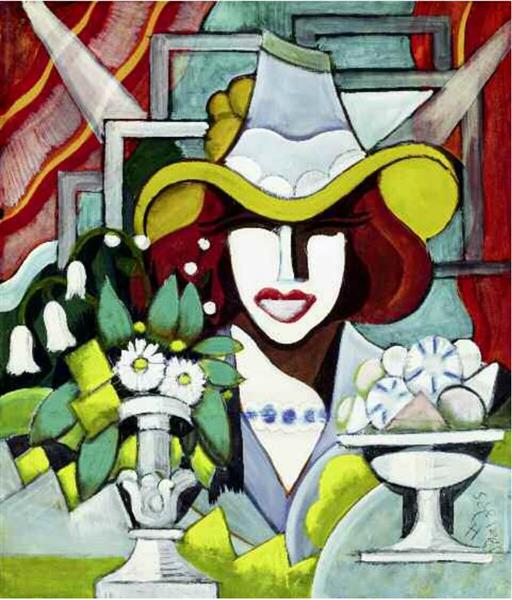Description
Hugó Scheiber, one of the most prominent artists of Hungarian modernism, is known for his unique approach in the representation of the human figure, in particular women, who often evoke a mixture of intimacy and strength. In his work "Kapaos Hölgy m? Teremben", various elements that characterize his style are condensed: a vibrant palette, an orderly composition and the use of forms that, without losing their naturalness, are reconfigured in an almost abstract language. The work captures a young woman in a study environment, a context that not only highlights the intimacy of the moment, but also suggests a reflection on the role of the artist and the subject in the creative process.
The central figure of the painting, a woman who seems to grace her place in the scene, is surrounded by a disposition of elements that frame her presence. The young woman is sitting, in a pose that suggests both meditation and attention, which causes in the viewer a sensation of personal connection with the subject. The use of soft and curvilinear lines contrasts with the most definable spaces of the composition, showing Scheiber's mastery to use the simplification of forms as a means to enhance emotional expression. The woman's clothing, in energetic tones, seems to absorb light, capturing the warm atmosphere of the study and vivacity of the moment.
The colorful and luminous palette used by Scheiber is a constant dialogue between the background and the figure, where the warm tones and the interaction of lights and shadows grant a depth that goes beyond simple representation. The choice of the fund, despite being less detailed, becomes a vivid support that emphasizes the central figure, allowing the viewer to focus on his presence without distractions. This fusion of the figure with its surroundings resonates with the most modern traditions of art, where the figurative and the abstract are in a delicate balance.
Through "Kapaos Hölgy M? Teremben", Scheiber also invites us to reflect on the role of women in the artistic space, not only as a model, but as an active creation in the painting process. This approach is representative of the social context of the early twentieth century, where new ideas about the identity and role of women began to bloom. The work stands, therefore, as a testimony of this cultural evolution through the unique look of the artist.
Hugó Scheiber's style can also be compared to works by other modernists such as Henri Matisse and his contemporaries, who also played with the shape and color to explore subjectivity in representation. In this sense, "Kapaos Hölgy m? Teremben" is not only a portrait, but an exercise exercise that evokes the spirit of an era, offering the viewer a window towards a combination of modernity and tradition at the same time.
Thus, this work becomes a celebration of the female figure through a modernist prism that highlights both its beauty and its individuality, consolidating Scheiber as a bridge between classical art and the most innovative currents of the twentieth century. As the viewer's gaze goes into each nuance of this painting, It becomes part of a dialogue between the artist and her model, a meeting that transcends the time and space to leave us a deep mark of admiration and reflection.
KUADROS ©, a famous paint on your wall.
Hand-made oil painting reproductions, with the quality of professional artists and the distinctive seal of KUADROS ©.
Art reproduction service with satisfaction guarantee. If you are not completely satisfied with the replica of your painting, we refund your money 100%.

